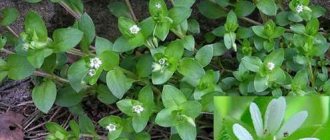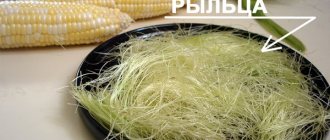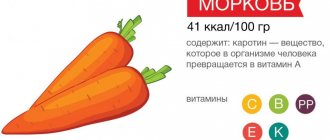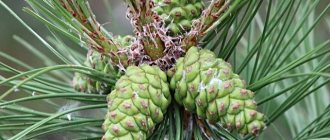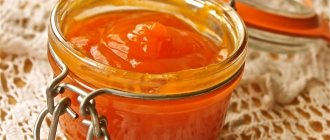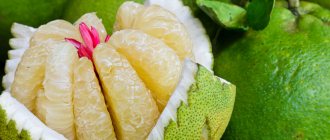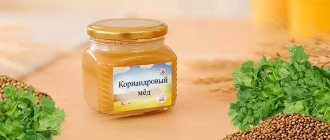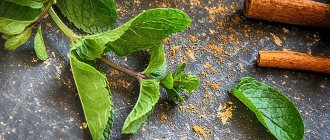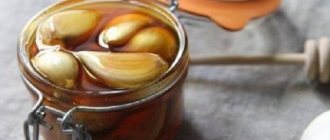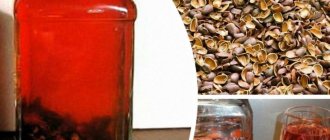What is the composition of beet tops
Beet tops grow in our beds earlier than cabbage and many other vegetables, and they can easily replace these products and also fill our diet with vitamins.
Beautiful green leaves with burgundy veins and petioles not only look so beautiful and appetizing, but are also very tasty and healthy.
It contains a lot of fiber. Macro- and microelements can be distinguished: fluorine, iron, zinc, copper, aluminum, calcium, potassium, boron, magnesium, cobalt.
Of the vitamins, beet leaves contain - Vitamins A and C, Vitamins K, PP, B vitamins, rare Vitamin U. The burgundy part of the leaf is rich in natural antioxidants.
Therapeutic effects
Beet tops are also used in folk medicine. Thanks to their medicinal properties, greens have a number of positive health effects:
- Formation of connective tissue.
- Strengthening the skin.
- Strengthening the walls of blood vessels.
- Strengthening bones.
- Neutralization and removal of toxic substances, especially in the brain.
- Cell growth support.
- Increased gastric acid production, which in turn improves protein absorption.
- Stimulating the production of red blood cells, therefore improving the supply of oxygen to cells.
- Fighting depression and stress.
- Supports the removal of acids and fluids from the body.
- Removing toxic substances from the intestines.
- Eliminate constipation.
- Ensuring hair elasticity, shine, nail strength, skin elasticity.
In addition, beet tops are an excellent source of essential minerals and vitamins. Consumption of healthy greens helps lower blood pressure, regulate heart rate, and strengthen the nervous system.
The silicon contained in the leaves is responsible for hard bones, strong, healthy hair and nails. The tops also contain large amounts of calcium, magnesium, iron, zinc - all these elements are important for both women and men, especially zinc, which increases fertility.
Article for you:
Raspberry leaves: medicinal properties and contraindications in folk medicine
Beet tops: benefits and medicinal properties
Considering the chemical composition, we can conclude that the leaves of this vegetable can be classified as a useful, nutritious, dietary, biologically active food supplement.
- Recommended for people with diseases of the cardiovascular and endocrine systems, especially diabetes. The leaves help maintain optimal blood sugar levels.
- It will help normalize metabolism in the body and improve the condition of the entire gastrointestinal tract. It is recommended to use in the treatment of gastritis, peptic ulcers, even in the chronic stage.
- Dietary fiber will help cleanse the intestines, remove waste and toxins.
- It is very useful to add young fresh leaves to vegetable salads to improve the process of hematopoiesis and to prevent atherosclerosis.
- Choline will help protect our liver from fatty deposits and dangerous tissue degeneration.
- Antioxidants will protect the body from cancer and premature aging.
- Elderly people need it to prevent osteoporosis.
- Iron and Vitamin K are necessary to prevent anemia and anemia.
- Anthocyanins have anti-inflammatory, antimicrobial, and mild anti-aging properties. Regular use of this product will improve the condition of the skin, nails and hair, and maintain eye health.
- Vitamin C (ascorbic acid) will strengthen the immune system and increase the orgasm's resistance to colds and viral infections.
- Can be used externally to heal wounds, reduce freckles and age spots.
From all of the above, we can conclude that beet tops are recommended for use when:
- Blood diseases.
- Low blood pressure.
- Low hemoglobin.
- Gastrointestinal disorders.
- Pancreatitis, cholecystitis.
- Diabetes mellitus.
- Constipation, sluggish bowel syndrome.
- Myoma, polycystic disease, fibromyoma.
Traditional medicine recipes
The unique chemical composition of beet tops makes it possible to use it as a medicine for various diseases. Traditional medicine knows many recipes, the main ingredients of which are beet leaves and petioles.
So, with a sluggish intestine and a tendency to constipation, 20 g of crushed beet leaves should be poured with boiling water (one glass). After the infusion has cooled, it must be drunk during the day in approximately four doses.
If you have a severe headache, you should boil the leaves of the tops for three minutes, then grind them into a paste and apply it as a compress to your forehead.
In case of mastitis, fresh leaves of the tops should be intensively mashed so that they release the juice. The resulting mass must be applied to the seals. You need to keep this compress for at least thirty minutes.
For calluses and unsightly cracks on the heels, apply compresses made from beet tops juice at night. The leaves are mashed with a spoon, the resulting paste is applied to the affected areas, and then they are wrapped in a bandage and cotton socks are put on.
A mask made from thoroughly mashed beet leaves will help get rid of acne. It should be applied avoiding the areas around the eyes.
Tops have also proven themselves to be excellent in the fight against freckles and age spots. Apply a paste of mashed beet leaves to problem areas or lubricate them with juice from the tops.
Before this, you should treat the skin with a soda solution, which is prepared as follows: dissolve one and a half teaspoons of soda in a glass of water.
Beet tops: harm and contraindications
This product will not cause any particular harm to your orgasm, but there are some contraindications that should be taken into account:
1. The leaves contain a large amount of oxalic acid (0.7 mg per 100 g of product), which, when interacting with phosphorus and calcium, forms salts. They are very poorly excreted from the body and can lead to the formation of stones. Therefore, it is not recommended to use this product for people with problems with the gallbladder and urinary system.
2. Do not use while taking anticoagulant drugs, so as not to increase the concentration of Vitamin K above the permissible norm.
Is it possible to eat
Can the tops be eaten? Well, of course, yes. You will be surprised, but initially it was the root vegetable that was used for medicinal purposes, but it was the beet tops—the leaves with petioles—that were used for food. Smooth or wavy, triangular or heart-shaped, beet leaves are collected in a beautiful rosette.
The petioles of beet leaves are long, fleshy and incredibly juicy. The variety of colors of the tops is amazing - from green with thin crimson veins to dark red, sometimes even purple.
Of course, the most delicious and tender will be the young tops. In addition, it is important to choose fresh, elastic leaves that are dark green in color (the main signs of freshness). The presence of yellow areas indicates dryness and lack of freshness of the product.
Calorie content
In 100 gr. greens contain only 22 kcal., 2.2 g. protein, 0.1 g. fat and 0.6 g. carbohydrates. 1 large sheet weighs about 32 grams.
Compound
So we get to the main thing: listing the beneficial substances contained in beet leaves:
- Vitamin C or ascorbic acid (30 mg) - strengthens fragile capillaries, improves immunity, is indispensable in the fight against depression, supports our nervous system and helps fight fatigue.
- Vitamin A (316 mcg) is considered one of the most important in the body. It is responsible for visual acuity, restoration and nutrition of skin cells, and normal functioning of the digestive tract. It is an antioxidant that protects body cells from harmful effects, prevents cancer and the development of coronary heart disease.
- Folic acid . Necessary to ensure normal brain activity and nervous system. Folic acid is especially necessary for pregnant women - during the period of bearing a child it helps the intrauterine development of the fetus.
- B vitamins (B1, B2, B6) , which are involved in normalizing metabolism, regulating the functioning of the immune system, and also play an important role for the nervous and cardiovascular systems.
- Nicotinic acid improves metabolism, participates in redox processes, and prevents the formation of cholesterol in the blood.
- Choline has a beneficial effect on the condition of liver cells and prevents its fatty degeneration.
- Pectin or soluble fiber, which normalizes digestion processes and significantly increases the overall tone of the body.
- Vitamin K plays an important role in blood clotting and promotes the formation of strong bones.
- In addition, beet tops contain a lot of microelements that are necessary for the normal functioning of the body: iron, magnesium, chlorine, calcium, aluminum, copper, manganese, cobalt, etc.
Benefits for the human body
Based on the composition of beet leaves, we can talk about their beneficial properties:
- Normalizes digestion . Thanks to fiber (dietary fiber), beet tops are used to stimulate intestinal cleansing and prevent the accumulation of pathogenic microflora, which often leads to serious disruptions in the functioning of the digestive system.
- Prevention and treatment of constipation . Remember that the tops have a mild laxative effect, which will greatly help people prone to constipation.
- Helps in the structure and restoration of damaged body cells. So to speak, indirect rejuvenation. Nicotinic and folic acid, as well as vitamins contained in the tops, promote the formation of new cells, and also stimulate the processes of development and tissue growth.
- Improvement of cardiac activity . A high concentration of vitamins (vitamin B9 and vitamin C) has a beneficial effect on the walls of blood vessels - they become stronger and more elastic.
We have written more than once that dark leafy vegetables are extremely beneficial for health precisely due to their content of fiber, folic acid and antioxidants. But when we talk about them, we usually mean expensive arugula, spinach, broccoli, kale, forgetting about the extremely affordable beet tops and parsley!
Remember, healthy dishes and products are not equally expensive and unusual. Beet leaves, garlic arrows, dill, turnip leaves, flaxseed - all this costs a penny, is extremely affordable and grows in every second (if not first) garden and at the same time contains the same vitamins and nutrients as those collected abroad, which are profitable sell at exorbitant prices.
Harm
- If you suffer from diarrhea or are prone to it, or have hemorrhoids, then you should be careful when consuming tops - after all, they have laxative functions.
- You should also consult a doctor if you have severe inflammatory processes in the kidneys and bladder - the tops can stimulate more urination.
- Due to chevelic acid contained in beet leaves, people with gout (article on the topic about salt deposition ) also need to carefully monitor their consumption.
- People taking anticoagulants (blood thinners) are not advised to consume beet tops in large quantities as they contain a lot of vitamin K. In simple terms, do not eat beet tops if you have thick blood and are trying to thin it with medicines.
- Always remember about individual intolerance , so it is better to first check whether this product will cause an allergic reaction.
It is also important to consult on nutrition for people with kidney disease or gallstones or bladder stones.
How to choose
After the beets and tops are dug up, the leaves are usually cut off from the fruit so that after harvesting they do not continue to draw juices from the beets. It is the beets along with the tops that are worth buying at the market, in which case you will receive fresh and juicy leaves for your table.
When purchasing, you should also pay attention to the color and freshness of the beet leaves. If they look bright, fresh and holding their shape, you can purchase tops.
Storage
If you bought beet tops with a root crop, cut off the leaves with petioles about 1-2 cm above the tuber. Remove all that have faded and changed color, remove the remaining sand and earth with a brush or damp cloth.
Place the tops in a bag or container with a lid and place them in the vegetable compartment of your refrigerator. Beet leaves are stored for no more than 3-4 days.
Harvesting beet tops
The most useful are the leaves picked directly from the garden. They contain the maximum concentration of nutrients.
You can use it all season from May to October, during which time you will significantly strengthen the body, improve digestion, and speed up metabolic processes.
Unfortunately, you won’t be able to eat fresh leaves all year round, but in order not to deprive yourself of a source of vitamins, you can freeze it.
How to freeze beet tops for the winter?
Only freshly picked leaves along with petioles are suitable for freezing. You need to cut it close to the ground, in which case the root crop will give new greenery after a while, which you can also use.
Before freezing, rinse the leaves with petioles well in cool water to remove dirt, dust, sand, midges, and bugs. Cut 2-3 cm from the petiole and discard. Nitrates and various harmful substances that could be in the atmosphere or soil very often accumulate in this part.
Next, the leaves and petioles are cut in any way (convenient for you). You can use the petioles for cubes, and the leaves for ribbons. The prepared green part of the beets is placed in a container, poured with boiling water for 5 minutes, the water is drained, the greens are transferred to a colander, and the water is allowed to drain completely.
Then the raw materials must be dried well, naturally, without additional heat sources.
Place the dried tops in plastic containers or freezer bags. Do not compact too much, otherwise you will end up with a tightly frozen lump that is difficult to break.
The frozen product can be used until the next harvest.
On a note! Many housewives prefer to dry the leaves, but after such treatment some of the beneficial components will be lost. Also, pickling and fermenting the tops will not bring you any benefit other than the original taste.
To prepare first courses, greens can be pickled in a jar. Prepare the leaves with petioles as for freezing, but then sprinkle with coarse salt, grind a little, and leave until the salt is completely dissolved. Then transfer to sterilized jars, compact, and store in the refrigerator for up to 6 months.
Use in cooking
You can prepare various delicious soups, side dishes, and salads from young leaves. Let's look at a few recipes for preparing delicious healthy dishes.
Soup
On hot days, Polish-Lithuanian chłodnik, a traditional cold soup, will help you cool down. Take:
- a bunch of young leaves (ideally with small root vegetables, or add some beets);
- a bunch of radishes;
- cucumber;
- 2 shallots;
- 100 ml sour cream (the fattier the better);
- 150 ml buttermilk;
- 1/2 l vegetable broth;
- 2 hard-boiled eggs;
- pepper;
- salt.
Cook the beet tops and beets in the broth for 10 minutes. Cut the radishes and cucumber into thin slices, chop the shallots. Drain the broth, stir in the buttermilk and sour cream, add back the beet leaves and other chopped vegetables, season with salt and pepper. Place the soup in the refrigerator for 2 hours. Before serving, add chopped eggs on top.
Borsch
The recipe for borscht with tops differs little from the classic method of preparing the national dish. Just cook chopped beet leaves together with potatoes (the amount depends on your taste - you can use them as an alternative to cabbage).
Garnish
Tops stewed with onions serve well as a side dish. Chop a bunch of leaves and 2 onions. Fry the onion in a spoon of oil, add herbs, season with coriander, salt, add water if necessary, simmer for 5 minutes under the lid.
Ossetian pie
Ossetian pie is another way to use sugar or red beet tops. In addition to its excellent taste, the pie will provide the body with important substances contained in greens, which is why in recent years it has experienced a revival in the menu of healthy lifestyle supporters. Plus, the pie recipe is relatively simple.
You need:
- 1/2 kg flour;
- 80 ml water;
- 10-12 g dry yeast;
- 10-12 ml vegetable oil;
- 10-12 g butter;
- a pinch of sugar;
- a pinch of salt;
- 150-200 g suluguni;
- 200 g of tops.
Article for you:
The use of bay leaves in folk medicine for medicinal purposes
Mix the yeast with flour, separately combine sugar, salt, vegetable oil and water, add the mixture to the flour with yeast. Make the dough, leave it for 20 minutes to rise.
Mix the chopped tops, suluguni, butter - you have a filling. Make a flat cake from the dough, place the filling on it, fold the edges of the dough. Make a small hole on top (it is needed for steam to escape).
Bake at a temperature of 220? C for 15 minutes (pre-grease the baking sheet with vegetable oil).
Salad
Well, finally, prepare the salad. Wash a small bunch of fresh leaves and tear them into pieces with your hands. Add 2 chopped tomatoes, 150 g mozzarella. For dressing, mix:
- 2 tbsp. olive oil;
- 1 tbsp. sugar (possibly cane sugar);
- 1 tbsp. soy sauce;
- 1 tsp lemon juice;
- pepper;
- salt (if necessary - usually soy sauce adds the necessary saltiness).
Pour the dressing into the salad and stir.

